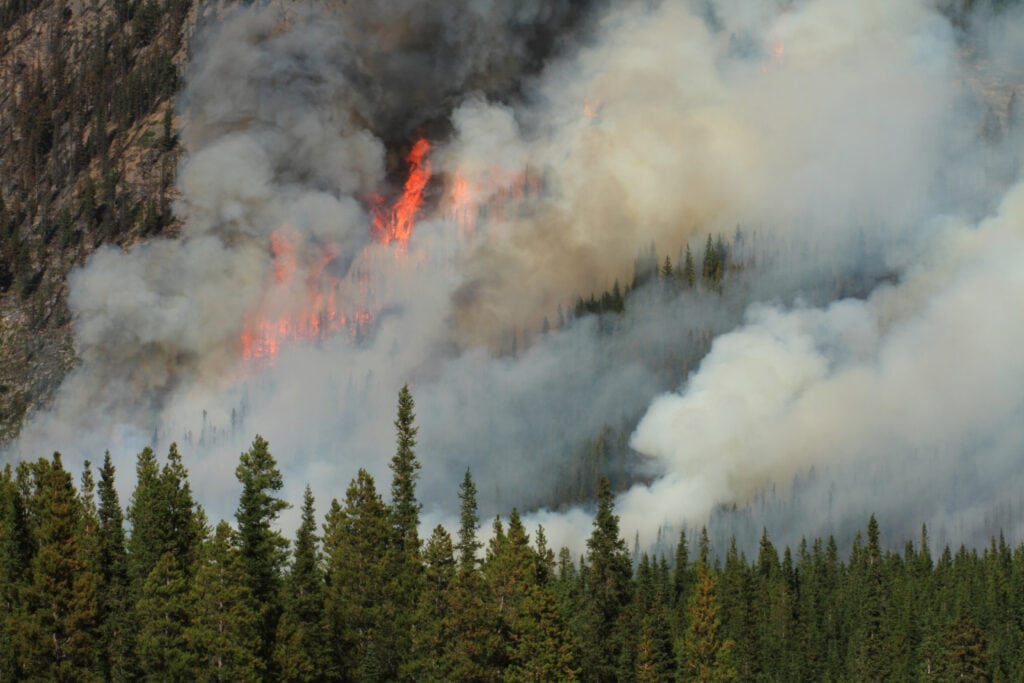California residents know that wildfire season is not something to be taken lightly. In 2022, the Golden State witnessed more than 1,500 wildfires. The Camp Fire in 2018 was one of the most destructive wildfires in history and its impact is still felt by Californians. Each year, destructive wildfires evoke fear and dread amongst the people who live in wildfire prone areas. Shockingly, though, certain avian residents of these same areas might actually be reaping some benefit from this yearly pattern of widespread fire.
Related Article: 500 Million Birds Migrating Across the United States
The Mountain Quail is a charming little bird which dwells primarily within the mountainous regions of the Pacific Northwest. It is often found within the Sierra Nevada Mountain Range, the site of many of California’s most damaging wildfires.
It would be easy to assume, then, that this shy ground foraging quail would be hit hard by the frequency and severity of the fires within this region. A recent study indicates that this may not be the case.
Mountain Quail are secretive and can be difficult to spot. They are, however, very vocal. The study, which was published in the journal, Fire Ecology, relied upon data collected from recording the calls of Mountain Quail.
Researchers from the Cornell Lab of Ornithology, the University of Minnesota, University of Wisconsin-Madison, and the University of Montana conducted the study and were shocked by their findings. Firstly, it was found that Mountain Quail populations are higher than previously believed. The density of recordings gathered suggests that these birds are much more successful than researchers had expected.
What was even more surprising, was the correlation discovered between higher Mountain Quail populations and instances of wildfires. The regions that had suffered impactful wildfires within the last 1 to 6 years were associated with higher densities of Mountain Quail. To a lesser extent, even areas that have been connected with wildfires within the last 35 years saw an increased Mountain Quail population.
The study does not indicate a single cohesive answer to the question of why wildfires might have such a positive impact on Mountain Quail. The benefits of wildfires in certain contexts are well-known. Wildfires clear out dead organic materials and expose nutrient-rich soil. Small periodic fires are often an extremely necessary part of the life cycle of a forest and can be beneficial to the overall health of the ecosystem.
For the Mountain Quail, many of the fires that correlate with its population’s success are much larger and more catastrophic than the smaller healthier fires described above. Despite this, even deadly fires can still be beneficial to certain members of the ecosystem. The study terms this as wildfires producing “winners” and “losers.” As increasingly severe wildfires become a common, if generally unwelcome and upsetting, part of the life cycle of California’s forested regions, understanding these relationships is more critical than ever.
Popular Article: The Viral Story of the Eagle Who Attempted to Hatch a Rock and Became a Dad

